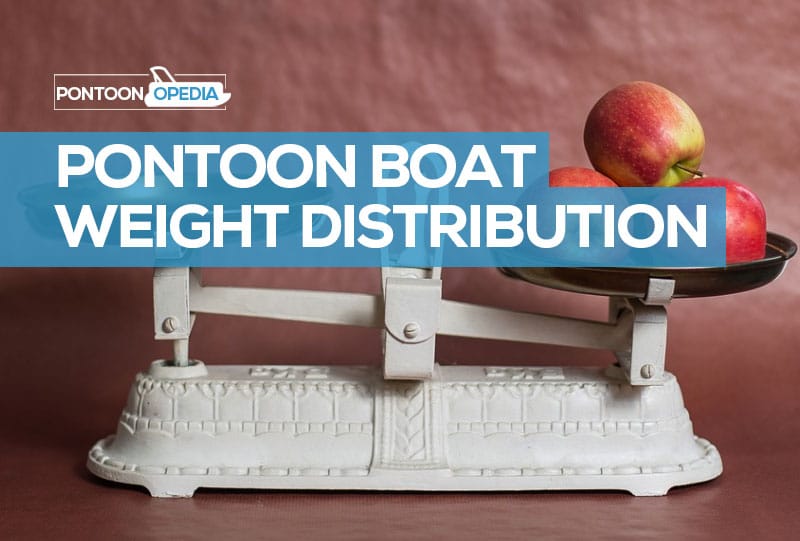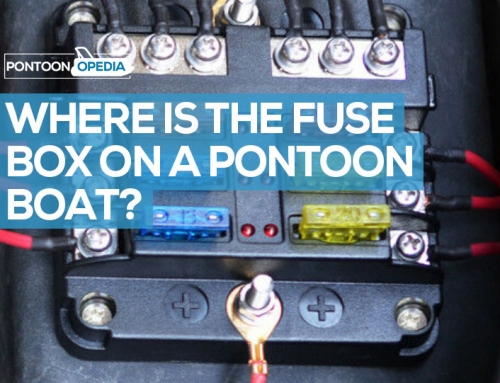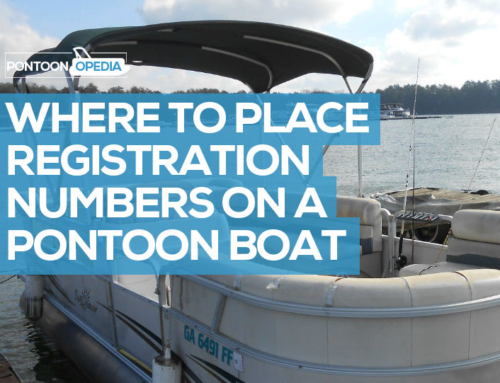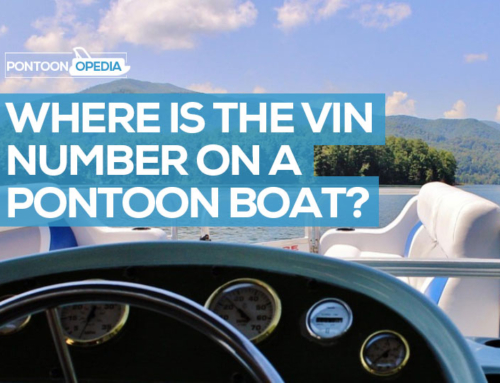Getting weight distributed across your pontoon boat is essential if you want to keep things safe. Whilst rare, pontoons can torpedo downwards into waves if overburdened, and they have even been examples where they have sunk.
From a personal perspective, I’ve never over-loaded my pontoon, and always stick to safe passengers’ limits, even distributed, as per my capacity plate. I’ve also never done any large projects where I’ve added heavy equipment onto my boat deck.
But, due to demand from a few website visitors, I’ve been asked recently to put together some guidance on pontoon boat weight distribution, how to do it, what to look out for, risks, dangers, and strategies – including when trailering which is lower down the page.
What I’ve done is talk to other pontooners who have successfully completed their own projects, where distributing weight safely in their pontoon boat was an issue they had to overcome.
Before we get into the tips, just a quick overview of pontoon boat weight distribution.
Generally speaking, the weight distribution on a pontoon boat isn’t as important as it might be on a V-shaped hull vessel. Having a balance on the left and right on a V-shape is critical, but with pontoons you can get away with having heavier weights on one side versus another a lot more.
For example, in my pontoon I can have a slight tilt to one side if 3 people go sit on the left, but nothing that would ever concern me. If it’s more than 3, I get them to spread themselves around evenly instead.
With the front and rear balancing, I find that the more people or weight you have at the back, the better-balanced things are. The more weight I have at the back of the boat, the faster I can go as there’s not as much surface drag on the pontoon tubes when the front is out of the water.
Below you can see examples of what they said, how they did it, with tips and advice that you can get some inspiration from.
Handy hint: I developed a pontoon boat capacity weight calculator which you can try out, letting you get an estimate on weight capacity – try that calculator here.
Pontoon boat weight distribution problems
One example I saw was a guy who was moving passengers’ seats to the front of the deck, to make room for two fishing seats at the rear. His main concern was that with leisure cruising, he’s going to have everyone sat up near the front of the boat.
The recommendations were to add a third pontoon (changing the boat to a tritoon), use a heavier motor which could help to bring the back down, and make sure that people are sat at the back to help with speed.
Pontoon boat weight distribution on a trailer
Aside from when you’re in the water, you can also have weight distribution issues when trailering. For example, you might notice that either end of the trailer is taking most of the weight; the tires are a tell-tale sign.
If you see front tires having more pressure on them than the rear trailer tires, it could be due to the ball hitch being too low down on your vehicle, rather than a weight distribution problem.
You can soon test and fix that by moving the trailer tongue up (or down if you have the reverse problem). Here’s what I found someone saying on a boat forum which I thought was great advice:
“Unhitch the trailer and jack it up until the trailer is level with the ground. The front and back of the trailer, assuming there is no sagging in the trailer, should be the same height from the ground. Now, the truck hitch should be that height plus the number of inches that the truck suspension sags when the trailer is attached to the truck. Driving with a hitch either too high or too low will overload the trailer tires and suspension and will be somewhat problematic. Once the correct hitch is on the truck, you can look at the weight distribution of the pontoon on the trailer.”
Another tip that not many new boat owners are aware of when trailering, is to check what the tongue weight of the trailer is. This can help fix up weight distribution problems when trailering your pontoon boat.
You will need to take your trailer to a truck weighing scale station, where you can calculate what the tongue weight should be – aiming for 10% to 15% of the total weight.
Before weighing, make sure that all the weight is in place that you would be towing normally, for example a full tank of fuel, accessories loaded on, fishing equipment, food, drink, anchors and so on.
Then do this:
- position trailer completely on scale with jack very near end of scale.
- uncouple from truck.
- record total weight of trailer rig.
- reattach trailer to truck.
- record trailer weight again.
- the difference is the tongue weight.
To calculate the tongue weight percentage do this: (Tongue weight / Total Weight) x 100
If the number you get is in excess of 15% that means you need to move your pontoon boat further back on the trailer. It’s simple enough to do. Just move the winch post back when the boat is unloaded, or you can move things like coolers to the rear.
How load balance and weight distribution can affect boat performance
One of the more common things you hear, is people who buy a boat and don’t get the performance that they expect. They might see a top speed in the manual or review, but just aren’t getting that performance themselves.
Your speed depends on multiple variables including how much load you have including gear and passengers, wind speed, how much gas you have in the tank, and so on.
But the most important factor always comes down to weight… and distribution. In other words, where weight on the pontoon boat is located can have a huge effect on speed and performance.
Understanding how weight distribution and loading on your pontoon boat works can lead to much improved performance. Here are some tips:
Center of buoyancy and centre of gravity should line-up
Your boat’s center of gravity (aka CG) is the point on your pontoon where the gravitational force, the downwards push, is focussed.
Your boat’s center of buoyancy (aka CB) is the point on your pontoon where the floating forces, the upwards push, is focussed.
An ideally weight will be distributed across the pontoon boat so that the CB and CG line-up in a vertical match when the boat is at standstill.
The CG will be 605 to 65% aft of your boat’s bow in almost every single pontoon boat.
If you can distribute the weight in your pontoon boat near to the CG you should get better performance – not just from a speed perspective but also in terms of how much fuel you use, and how the boat handles.
Learn how to trim your engine effectively
By trimming your engine, you can re-direct thrust up from the prop, lifting the bow out of the water, getting you to the best spot in terms of performance.
If your boat is loaded more on one side, you can adjust with the trim tabs by raising the pontoon boat up on either side.
Handy hint: If you have heavy gear at the stern, distribute more weight evenly across the rest of the pontoon boat, including where passengers are seated.






